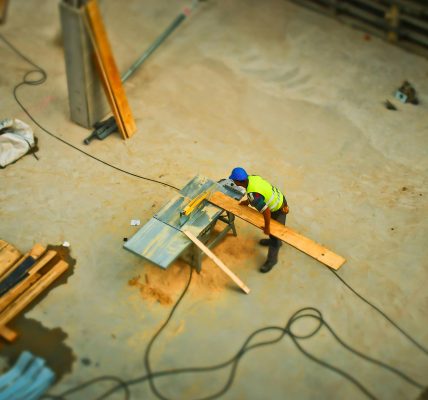The Growing Importance of Real Estate Models in Saudi Arabia
Saudi Arabia’s real estate market is undergoing a profound transformation, driven by various socio-economic factors and government initiatives geared towards urban development and enhanced investment opportunities. The rise of the real estate model Saudi Arabia serves as a key component in this dynamic landscape, facilitating better planning, investment strategies, and project execution. With the Kingdom’s Vision 2030 initiative placed at the forefront of economic diversification, understanding the importance and implementation of real estate models has never been more critical.
1. Overview of the Real Estate Market Landscape
The Saudi Arabian real estate market has historically been a central player in the nation’s economy. With a market value projected to reach approximately US$2.31 trillion by 2025, the opportunities in various real estate sectors are promising. Residential real estate, commercial properties, and industrial developments are rapidly evolving, thanks to ongoing urbanization and population growth, intensified by a youthful demographic eager for modern housing solutions.
The residential sector alone is set to see robust growth, partly due to rising property values and increased mortgage activity. The increase in foreign and private investments in the sector is also noteworthy. Locations in urban centers such as Riyadh, Jeddah, and Dammam are becoming increasingly attractive to both local and foreign investors, leading to a flourishing real estate development scene.
2. Key Drivers Behind Real Estate Innovations
Several factors are propelling the evolution of real estate models within Saudi Arabia:
- Vision 2030: This ambitious plan by the Saudi government aims to diversify the economy, reduce dependency on oil revenues, and promote sustainable urban development. The initiatives encompassed in Vision 2030 have enhanced investment opportunities and frameworks guiding real estate developers.
- Technological Advancements: The integration of technology into real estate model development promotes efficiency and effectiveness in project delivery. From building information modeling (BIM) to the Internet of Things (IoT), developers use advanced tools to achieve better modeling, site management, and post-construction operations.
- Increasing Demand for Affordable Housing: The push towards affordable housing solutions, driven by rapid urbanization and a burgeoning population, emphasizes innovative modeling techniques to maximize the utilization of land and resources.
3. Challenges and Opportunities in Model Development
While the prospects for real estate modeling in Saudi Arabia are bright, several challenges accompany them. One major hurdle lies in the regulations governing land use and property development, which can sometimes hinder swift project execution. Furthermore, financial risk can deter investors from committing resources to projects perceived as uncertain.
Conversely, these challenges also present opportunities for improved real estate models. Organizations can leverage challenges to refine their strategies, adopt flexible frameworks, and create innovative solutions that adapt to evolving market conditions. For instance, rising urban population pressures present developers with the chance to enhance their community-centered approaches, integrating leisure, retail, and residential spaces within their projects.
Analyzing Current Trends in Real Estate Models
1. Shift Towards Affordable Housing Solutions
As urban populations expand in Saudi Arabia, the need for affordable housing has surged. Recent reports indicate that the residential real estate market is projected to ascend to USD 66 billion by 2030, with significant investments aimed at increasing homeownership to 70% within the same timeline. Developers and planners are beginning to use innovative real estate models that allow for the efficient design of affordable units without sacrificing quality.
2. The Role of Technology in Real Estate Modeling
Technology is reshaping how real estate models are developed, managed, and executed. Advanced project management tools, AI-driven analytics, and augmented reality (AR) for virtual walkthroughs are becoming commonplace. These technologies enable stakeholders to visualize projects, analyze data trends, and adapt in real-time, enhancing the decision-making process.
3. Case Studies of Successful Developments
Examining successful real estate developments in Saudi Arabia sheds light on effective model implementation. For instance, the King Abdullah Economic City (KAEC) exemplifies a comprehensive approach to urban planning. Elucidating a mix of residential, commercial, and leisure facilities, KAEC has been touted as a benchmark for future developments. Its model integrates sustainability practices and community-focused agendas, ensuring its relevance and adaptability to market shifts.
Investment Strategies and Risks in Saudi Real Estate
1. Exploring Fund Structures and Investor Profiles
Investing in Saudi Arabia’s real estate requires a keen understanding of the various investment vehicles available. Fund structures vary from Real Estate Investment Trusts (REITs) to direct ownership, each with its risk-return profile. Investors should define their individual targets and align their strategy accordingly, considering the unique aspects of the Saudi real estate market.
2. Key Regulatory Considerations for Investors
Foreign investors eyeing opportunities in Saudi Arabia must navigate a complex regulatory landscape. Laws regarding property ownership vary significantly based on the purpose of purchase, property type, and location. It’s critical to stay informed on the evolving landscape, particularly in light of the government’s initiatives aimed at attracting foreign investment.
3. Risk Mitigation Strategies in Model Development
With emerging opportunities come inherent risks. Effective risk mitigation strategies are essential in real estate model development. Comprehensive due diligence, engaging local experts, creating flexible financial models, and diversifying portfolios can significantly reduce the risks associated with real estate investments in Saudi Arabia.
Sustainable Practices in Real Estate Modeling
1. Emphasis on Eco-friendly Building Designs
The growing global emphasis on sustainable practices is echoed in Saudi Arabia’s development approach. Eco-friendly building designs that prioritize energy efficiency and resource conservation are increasingly preferred by both developers and consumers. Incorporating green roofs, sustainable materials, and efficient waste management systems into real estate models enhances the marketability and longevity of developments.
2. Integrating Renewable Energy in Developments
Integrating renewable energy sources, such as solar power, into real estate models significantly lowers operational costs and boosts sustainability. This aligns with Saudi Arabia’s broader energy diversification initiatives. Projects that harness renewable energies not only appeal to environmentally-conscious stakeholders but also enhance the overall attractiveness of the properties.
3. Community and Environmental Impacts
The social and environmental impacts of real estate developments must be taken into account. By embracing community-centric approaches and eco-conscious designs, developers can stimulate local economies and ensure their projects are in harmony with the surrounding ecosystems. Effective community engagement during planning stages is crucial for understanding local needs and ensuring that developments address them adequately.
Future Outlook for Real Estate Models in Saudi Arabia
1. Predictions for Market Growth and Innovations
Looking ahead, the Saudi Arabian real estate market is poised for continued growth and innovation. Projections indicate that the market will remain robust, particularly in residential and commercial sectors, as the Kingdom continues to modernize and diversify its economy. Adoption of innovative real estate models, including tech-driven solutions and sustainable practices, will play a key role in shaping this growth trajectory.
2. Government Policies Supporting Real Estate Development
Supportive government policies are essential in fostering a conducive environment for real estate development. Initiatives within Vision 2030, including affordable housing mandates and investment incentives, aim to stimulate the sector. Ongoing reforms in land ownership laws, financing options, and regulatory frameworks are expected to further support growth.
3. The Impact of Vision 2030 on Real Estate Modeling
Vision 2030 represents a seismic shift in Saudi Arabia’s economic framework, impacting real estate modeling significantly. The initiative not only enhances infrastructure but also shifts market dynamics, encouraging creativity and innovation within the sector. As the country transforms its approach to urban development, real estate models will evolve concurrently, focusing more on sustainability, community engagement, and technological integration.




